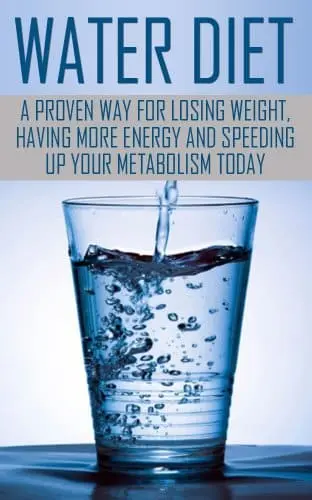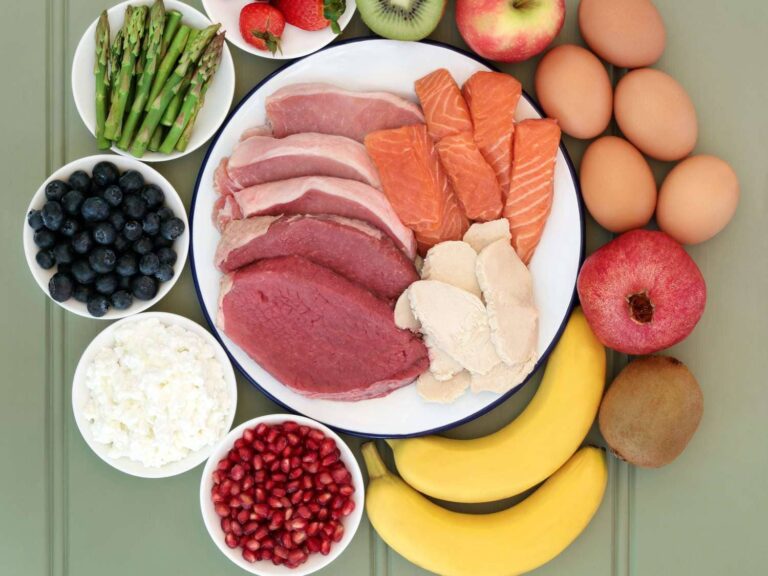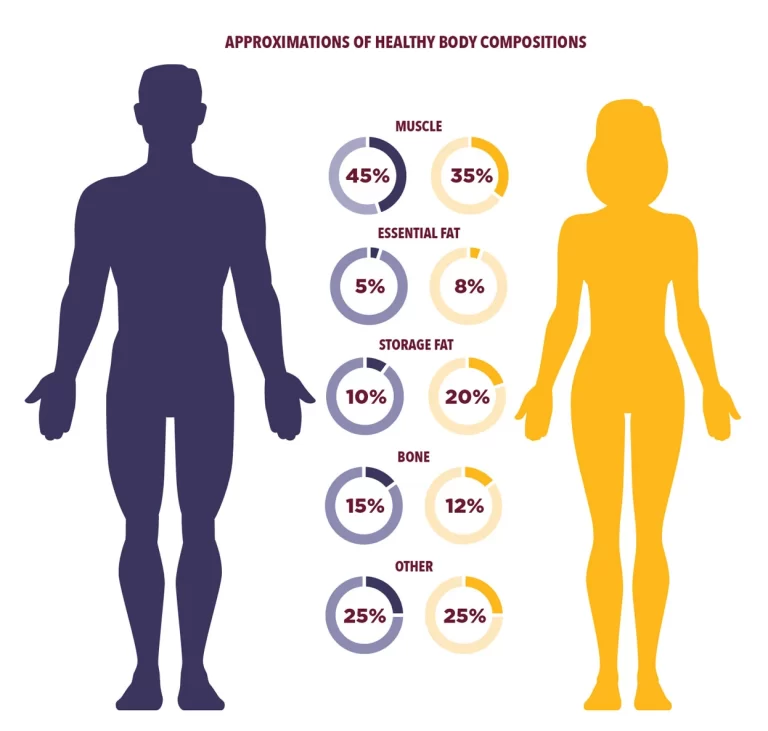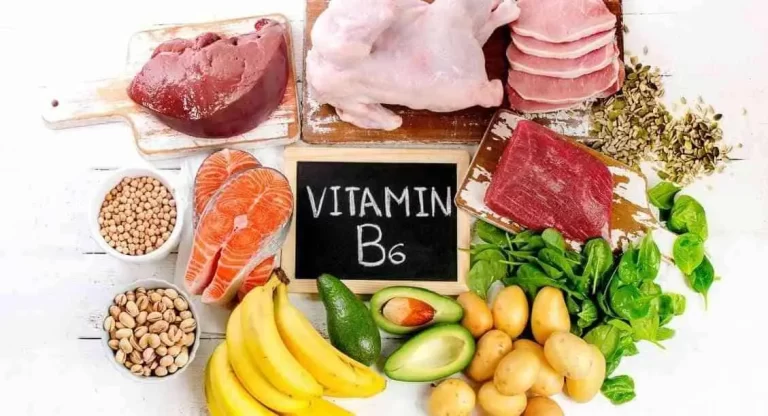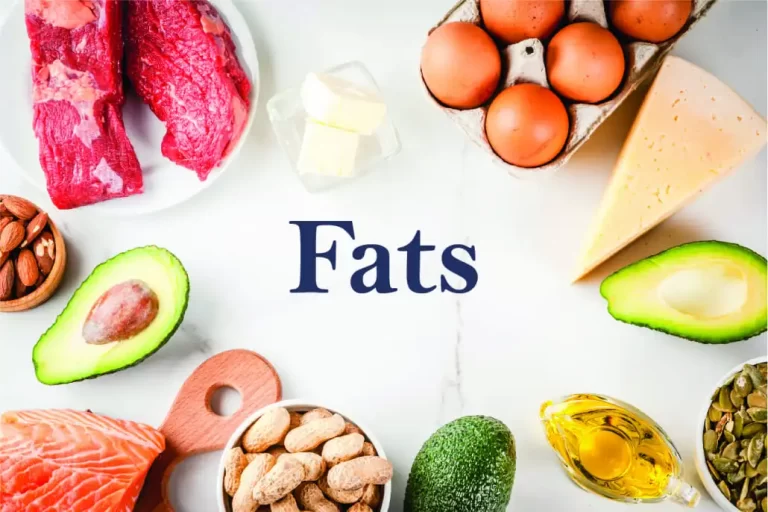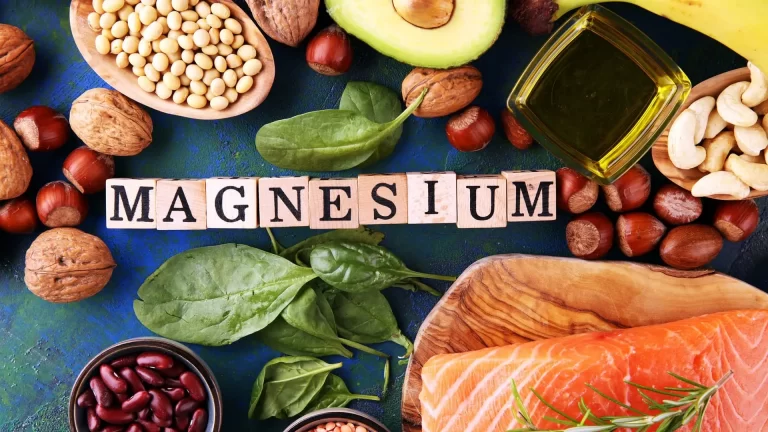Dietary Water
What is a Dietary Water?
It is often believed that drinking water while eating may be good for one’s health, particularly in terms of dermatology (which prevents aging).
The goal of the current investigation was to measure the effect of dietary water on key skin physiology parameters.
A total of 49 healthy ladies (mean age 24.5±4.3 years) were chosen, and a Food Frequency Questionnaire was utilized to assess their daily eating patterns, with a particular emphasis on water consumption.
This made it possible to create two groups: Group 1 (n=38) consumed less than 3,200 mL per day, while Group 2 (n=38) consumed more than 3,200 mL per day. (Eleven in total).
For a month, Group 2 participants’ daily diets included an additional 2 liters of water to measure the effects of this excess on their skin physiology.
Epidermal superficial and deep hydration, transepidermal water loss, and a number of biomechanical characteristics were measured in multiple anatomical sites (the face, upper limb, and leg) on days 0 (T0), 15 (T1), and 30 (T2).
Particularly in Group 1, this stress test (2 L/day for 30 days) dramatically altered the moisture of both the superficial and deep skin.
The biomechanical descriptors that mattered the most showed the same influence. Therefore, it is evident from this study that increased water intake in a regular diet may have a good effect on normal skin physiology, especially in those people who consume less water each day.
Keywords: skin hydration, TEWL, water consumption in diet, and skin biomechanics
The human body is mostly composed of water, which is essential to maintaining proper physiological equilibrium.
The food and beverage industry has extensively investigated this broad notion in an effort to promote the notion that increasing our consumption of water could have positive health and anti-aging effects.
While it hasn’t been conclusively proven, the link between drinking more water and having healthier skin is generally acknowledged.
Water makes up the majority of cells and tissues, plays a significant role in bodily fluid compartments, and makes up 75% and 60%, respectively, of the body’s mass in adults and newborns.
It is a necessary food that possesses special abilities as a solvent for ionic compounds and solutes, serving as a carrier and being crucial to maintaining cell homeostasis.
The environment in which all transportation systems operate is water.8 It aids in preserving intracellular and extracellular body volume, which is necessary to avert dehydration, a potentially fatal illness.
Water in the body serves as a lubricant and shock absorber in addition to being crucial for thermoregulation.
Even with the highly efficient neuroendocrine osmoreflexes that control thirst and voluntary water intake, a number of studies have revealed that the body’s daily water requirements cannot be met.
The amount of water provided by normal food and drink, including the water produced by cellular metabolism.
In contrast to other necessary nutrients, daily water consumption guidelines are frequently ignored, and there is no precise description of the amount of water needed each day. There are, nevertheless, a few suggestive suggestions.
The European Food Safety Authority (EFSA) suggests dietary reference values of 2.0 and 2.5 L of water per day for women and men, respectively.
Between the ages of 19 and 30, the Dietary Guidelines for Americans 2010 report specifies an appropriate water consumption as 3.7 and 2.7 L/day for men and women, respectively.
The physiology of human skin is known to depend on the cutaneous water content for a variety of skin functions, including the “envelope” and “barrier” functions.
A shortage of water is linked to a number of dermatological dysfunctions. However, there isn’t much evidence to support a link between these qualities and consistent dietary water consumption, and this topic hasn’t been covered in many publications.
In this study, the overall amount of water intake in a community was measured using a validated Food Frequency Questionnaire (FFQ).
This included measuring the amount of water consumed, the amount of water included in dietary components, and the amount of water produced by normal metabolism.
This would allow a correlation between the amount of water consumed and certain cutaneous functions to be assessed, providing further insight into the effects of dietary water on normal skin physiology.
Material and Methods
Subjects
49 healthy female volunteers, ages 22–34 (24.5±4.3) years, were chosen as a convenience sample. Gender has been shown to have an impact on normal physiology, which includes the skin.
Therefore, the goal of this compromise in the study was to lessen the heterogeneity due to gender.
Following the acquisition of informed written consent, volunteers were chosen in compliance with pre-established inclusion criteria.
The methods employed were previously approved by the institution’s ethical commission and fully conformed with all ethical criteria established by the Declaration of Helsinki and its revisions.
Experimental Design
All contributions accounted for the overall amount of water utilized in the population’s pattern of water consumption.
An FFQ was used as the measuring tool; it had previously been validated on a Portuguese population.
The total amount of water consumed by the volunteers was divided into three categories: drinking water (DrW), water from dietary nutrients (DiW), and water created during metabolism (MeW).
By using cluster analysis (see the next section), two groups with various total daily water consumptions were found.
Group 1 corresponds to a total water consumption group 2, which corresponds to a daily total water consumption greater than 3,200 mL (n=11), and group 2, which is less than 3,200 mL (n= 38).
The water consumption for the previous four weeks was used to stratify the groups, and ratings were taken on day 0 (T0), day 15 (T1), and day 30 (T2).
To determine the effect of this excess on their regular skin physiology, volunteers were then invited to add a set daily amount of water to their regular diet for four weeks.
The reference excess was determined to be 2,000 mL of water per day on average, based on the EFSA dietary reference values for women.
Measurements were made to quantify skin functions after subjects had fully acclimated to room circumstances (temperature and humidity: 21°C±1°C and 45%±5%, respectively) for around 20 minutes.
As per previously published guidelines, all assessments were carried out without the presence of heat sources or induced convection.
Five anatomical sites were measured: the leg (external face), the arm (ventral forearm and hand), and the face (zygomatic and forehead).
Throughout the trial, blood pressure and BMI (body mass index) were monitored to look for any changes in hemodynamics and weight. The Quetelet formula was used to calculate BMI, while blood pressure and heart rate readings were used to track hemodynamics.
Biometrics
The epidermal “barrier” function was evaluated using the epidermal hydration measured by the MoistureMeter SC and Moisturemeter D (Delphin Technology D, Bergisch Gladbach, Germany) system.
Expressed in AU (arbitrary units), and the transepidermal water loss (TEWL) measurement obtained with the Tewameter TM 300 (CK Electronics, Cologne, Germany), expressed in g/m2/h.
The CK Technologies Cutometer CM 575 system was utilized to evaluate the “envelope” function, measuring in millimeters.
The selected utility descriptors were: extensibility (Uf), total elasticity (Ua/Uf, including pulse stretching and recovery), elastic function (Ur/Ue), viscoelasticity (Uv/Ue), and the skin’s capacity to return to its initial state (Uf – Ua).
Statistics
Software from SPSS Inc., Chicago, IL, USA, was used to conduct descriptive and comparative statistical analysis. Version 20.0 of the program was used.
A group of people eating less than 3,200 mL/day (n = 38) was identified as Group 1 and another group of people consuming more than 3,200 mL/day (n = 11) as Group 2 using the cluster analysis.
Which is based on a hierarchic model that groups similar “objects”. The Mauchly sphericity test, the generalized linear model analysis of variance, and both groups underwent the Levene test. Testing these populations’ homogeneity was the aim.
We verified that the data distribution was narrow and tended toward normal and that the variance of the endpoint variables for these two groups was comparable.
The Bonferroni test was used for post hoc multiple comparisons, which is a sufficiently robust technique to control handling errors.
Additionally, the Spearman correlation coefficient was used to compare the variables. A 95% confidence level was used. Owing to the age homogeneity of the population, age adjustment was deemed unnecessary.
Results and Discussion
And both groups underwent the Levene test. Testing these populations’ homogeneity was the aim.
We verified that the data distribution was narrow and tended toward normal and that the variance of the endpoint variables for these two groups was comparable.
The Bonferroni test was used for post hoc multiple comparisons, which is a sufficiently robust technique to control handling errors.
Additionally, the Spearman correlation coefficient was used to compare the variables. A 95% confidence level was used. Owing to the age homogeneity of the population, age adjustment was deemed unnecessary.
Findings from the two groups with varying daily water consumption showed no discernible changes in terms of TEWL and the epidermal barrier.
The face, which had the greatest values (forehead and zygomatic region), was followed by the forearm and leg, which had the lowest values in both groups, as indicated by the progressive decreasing gradient in Table 1.
This fits with the anticipated anatomical and functional variance that is known. Thus, neither group’s epidermal barrier was considerably altered by our approach.
However, in terms of skin hydration, findings from the two groups with varying daily water consumption showed no discernible changes in terms of TEWL and the epidermal barrier.
The face, which had the greatest values (forehead and zygomatic region), was followed by the forearm and leg, which had the lowest values in both groups, as indicated by the progressive decreasing gradient in Table 1.
This fits with the anticipated anatomical and functional variance that is known. Thus, neither group’s epidermal barrier was considerably altered by our approach.
But in terms of skin hydration, The effects of dietary water intake on the skin are comparable to those of topical moisturizers.
Both surface and deep hydration variables in our current investigation consistently had an impact on epidermal hydration, which may indicate that more water is available for regular physiological processes (Table 2).
In Group 1, these effects are most noticeable starting at T1. We also evaluated the so-called “envelope” function to further
Table 1
Following the diet water surplus, transepidermal water loss alterations were found in both volunteer groups, serving as an indicator of the epidermal “barrier” in various anatomical locations.
| Group 1 | T0 (mean ± SD) | T1(mean ± SD) | T2 (mean ± SD) | (T1 vs T0) P-value | (T2 vs T1) | (T2 vs T0) |
| Forehead | 10.84±3.88 | 9.33±3.52 | 10.46±2.96 | 0.041* | 0.176 (ns) | 1.000 (ns) |
| Zygomatic | 10.55±3.40 | 9.75±3.17 | 9.88±3.02 | 0.563 (ns) | 0.801 (ns) | 1.000 (ns) |
| Hand | 8.88±3.25 | 8.31±3.01 | 8.40±2.77 | 0.641 (ns) | 1.000 (ns) | 0.957 (ns) |
| Forearm | 6.14±2.34 | 5.55±1.83 | 5.79±1.64 | 0.346 (ns) | 1.000 (ns) | 1.000 (ns) |
| Leg | 5.88±2.12 | 5.74±1.53 | 6.57±1.94 | 1.000 (ns) | 0.080 (ns) | 0.173 (ns) |
| Group 2 | ||||||
| Forehead | 10.98±4.05 | 9.39±4.02 | 9.76±3.56 | 0.406 (ns) | 1.000 (ns) | 1.000 (ns) |
| Zygomatic | 10.00±2.97 | 8.97±4.29 | 9.56±3.42 | 1.000 (ns) | 1.000 (ns) | 1.000 (ns) |
| Hand | 8.87±2.98 | 7.62±2.43 | 8.84±4.21 | 0.612 (ns) | 1.000 (ns) | 1.000 (ns) |
| Forearm | 5.83±1.33 | 4.98±1.95 | 4.90±1.39 | 0.702 (ns) | 1.000 (ns) | 0.136 (ns) |
| Leg | 5.35±1.48 | 4.71±1.33 | 5.31±1.57 | 0.858 (ns) | 1.000 (ns) | 1.000 (ns) |
The units of measurement are g/m2/h.
*P<0.05. Abbreviations: T0, day 0; T1, day 15; T2, day 30; vs, versus; ns, not significant; SD, standard deviation.
Table 2
Following the dietary water surplus, skin hydration alterations were seen in several anatomical regions in both volunteer groups.
| Surface hydration | T0 (mean ± SD) | T1 (mean ± SD) | T2 (mean ± SD) | P-value (T1 vs T0) | P value (T2 vs T1) | P value (T2 vs T0) |
| Group 1 | ||||||
| Forehead | 53.97±22.44 | 65.24±17.03 | 75.52±14.31 | 0.000** | 0.000** | 0.000** |
| Zygomatic | 48.66±25.41 | 57.04±23.93 | 69.52±21.51 | 0.025* | 0.000** | 0.000** |
| Hand | 33.59±18.29 | 30.31±16.91 | 47.48±15.60 | 0.125 (ns) | 0.008* | 0.000** |
| Forearm | 29.09±11.77 | 35.14±13.71 | 37.83±13.01 | 0.040* | 0.180 (ns) | 0.000** |
| Leg | 34.85±17.94 | 41.11±13.53 | 45.81±16.68 | 0.036* | 0.172 (ns) | 0.000** |
| Group 2 | ||||||
| Forehead | 50.64±18.77 | 49.67±15.60 | 61.86±17.83 | 1.000 (ns) | 0.023* | 0.176 (ns) |
| Zygomatic | 38.76±23.02 | 47.77±21.13 | 55.70±25.95 | 0.301 (ns) | 0.601 (ns) | 0.126 (ns) |
| Hand | 27.01±10.06 | 36.08±13.52 | 37.26±13.50 | 0.312 (ns) | 1.000 (ns) | 0.238 (ns) |
| Forearm | 26.89±22.16 | 28.16±12.30 | 27.94±7.85 | 1.000 (ns) | 1.000 (ns) | 1.000 (ns) |
| Leg | 33.05±19.57 | 34.34±12.77 | 32.64±11.66 | 1.000 (ns) | 1.000 (ns) | 1.000 (ns) |
| Deep hydration | ||||||
| Group 1 | ||||||
| Forehead | 29.20±4.88 | 36.34±9.25 | 40.62±10.21 | 0.004* | 0.008* | 0.000** |
| Zygomatic | 29.25±4.55 | 35.30±9.06 | 39.58±10.63 | 0.012* | 0.007* | 0.000** |
| Hand | 33.51±5.45 | 41.29±10.47 | 46.02±11.95 | 0.004* | 0.031* | 0.000** |
| Forearm | 23.32±3.96 | 28.37±7.50 | 30.64±8.65 | 0.030* | 0.136 (ns) | 0.000** |
| Leg | 28.67±5.21 | 36.94±9.76 | 39.63±10.84 | 0.000** | 0.457 (ns) | 0.000** |
| Group 2 | ||||||
| Forehead | 28.93±4.18 | 33.19±7.86 | 35.65±8.33 | 0.617 (ns) | 0.720 (ns) | 0.224 (ns) |
| Zygomatic | 27.50±4.53 | 32.67±8.38 | 35.56±9.23 | 0.437 (ns) | 0.345 (ns) | 0.110 (ns) |
| Hand | 34.15±8.59 | 36.72±11.10 | 36.70±11.25 | 0.315 (ns) | 1.000 (ns) | 0.344 (ns) |
| Forearm | 23.94±6.34 | 23.58±4.06 | 23.90±4.53 | 1.000 (ns) | 1.000 (ns) | 1.000 (ns) |
| Leg | 31.01±13.12 | 33.25±10.75 | 34.86±13.54 | 0.614 (ns) | 1.000 (ns) | 0.571 (ns) |
The values of surface and deep hydration, which are presented in arbitrary units, were acquired using various Moisturemeter frequency probes.
**P<0.001, *P<0.05.
The following are abbreviations: T0, day 0; T1, day 15; T2, day 30; vs, versus; ns, not significant; SD, standard deviation.
investigate the effects of this dietary water overload on the physiology of the skin. Skin mechanics and skin moisture have been linked to support the preservation of younger-looking, healthier skin.
It has been observed that dermal water acts as a “lubricant,” reducing friction between fibers, even in the top layers, and promoting the dynamics of the system as a whole.
It hasn’t been proven conclusively that skin hydration and biomechanics are directly related. According to multiple authors, biomechanical descriptors like maximum extensibility (Uf), return to.
Original state ability (Uf – Ua), total elasticity (Ua/Uf), elastic function (Ur/Ue), and viscoelastic ratio (Uv/Ue) have been identified as the most relevant and useful in identifying improvements in skin plasticity (Table 3).
As previously shown, skin biomechanics in both groups were affected by our experimental methods to varying degrees, and statistically significant evidence of biomechanical changes can be located in Table 3’s Group 1.
After two weeks of the test, total extensibility (Uf) dramatically improved in every part of the body, with the exception of the face.
These improvements persisted at the end of the research in all evaluated locations, with notable changes found in the forehead, hand, leg, and forearm (Table 3).
Similar effects were shown in all studied areas, with the exception of the zygomatic region in the face, where the skin’s ability to return to its initial state (Uf – Ua) greatly enhanced after the 2 weeks (T1) and 4 weeks (T2) of the water surplus.
This steady rise in Uf and Uf – Ua throughout the investigation appears to be associated with the maximum quantity of water present in these volunteers’ epidermis, allowing stress-induced deformation and recovery, as has been previously suggested.
It’s harder to track the evolution of the other ratios. With the exception of the zygomatic, total elasticity (Ua/Uf) was significantly lower in all studied locations, particularly in T2.
This indicates that the water surplus has a greater effect on skin extensibility (Table 3) than it does on elastic recovery (Ua).
This pattern is not followed by the viscoelasticity (Uv/Ue) or the elastic function Ur/Ue. These descriptors, however, are mostly dependent on the dermal components, whose contribution(s) cannot be precisely measured using these approaches, because they are intimately tied to age.
Regular long-term usage of topical moisturizers has been linked to a drop in the viscoelasticity index.
TABLE 3
descriptive information (mean ± SD) from pertinent skin biomechanical characteristics and the corresponding comparison statistics acquired at study start (T0), two weeks later (T1), and study completion (T2).
| Uf(mm) | T0 (mean ± SD) | T1 (mean ± SD) | T2 (mean ± SD) | P-values (T1 vs T0) | (T2 vs T1) | (T2 vs T0) |
| Group 1 | ||||||
| Leg | 0.230±0.15 | 0.195±0.16 | 0.645±0.72 | 0.305 (ns) | 0.003** | 0.007** |
| Forearm | 0.815±0.42 | 0.742±0.42 | 1.173±0.70 | 0.083 (ns) | 0.004** | 0.021* |
| Hand | 0.941±0.43 | 0.816±0.40 | 1.173±0.71 | 0.509 (ns) | 0.561 (ns) | 0.004** |
| Zygomatic | 1.798±0.67 | 2.009±0.75 | 1.889±0.75 | 0.500 (ns) | 0.837 (ns) | 1.000 (ns) |
| Forehead | 0.614±0.36 | 0.706±0.86 | 1.006±0.86 | 0.451 (ns) | 0.169 (ns) | 0.031* |
| Group 2 | ||||||
| Leg | 0.223±0.12 | 0.188±0.11 | 0.559±0.64 | 0.934 (ns) | 0.352 (ns) | 0.492 (ns) |
| Forearm | 0.772±0.22 | 0.711±0.23 | 1.272±0.66 | 1.000 (ns) | 0.171 (ns) | 0.223 (ns) |
| Hand | 0.867±0.16 | 0.826±0.54 | 1.196±0.72 | 1.000 (ns) | 0.322 (ns) | 0.395 (ns) |
| Zygomatic | 1.594±0.77 | 1.735±0.91 | 1.711±0.89 | 1.000 (ns) | 1.000 (ns) | 1.000 (ns) |
| Forehead | 1.005±0.68 | 0.872±0.70 | 1.067±0.83 | 1.000 (ns) | 1.000 (ns) | 1.000 (ns) |
| Uf–Ua (mm) | ||||||
| Group 1 | ||||||
| Leg | 0.032±0.02 | 0.036±0.03 | 0.774±0.59 | 1.000 (ns) | 0.001*** | 0.001** |
| Forearm | 0.105±0.06 | 0.093±0.06 | 0.805±0.68 | 0.364 (ns) | 0.001*** | 0.001** |
| Hand | 0.318±0.22 | 0.247±0.13 | 0.826±0.77 | 1.000 (ns) | 0.014* | 0.012* |
| Zygomatic | 1.024±0.65 | 1.323±0.83 | 1.235±0.97 | 0.380 (ns) | 1.000 (ns) | 0.819 (ns) |
| Forehead | 0.183±0.11 | 0.263±0.19 | 0.758±0.56 | 0.852 (ns) | 0.018* | 0.030* |
| Group 2 | ||||||
| Leg | 0.032±0.02 | 0.022±0.01 | 0.469±0.46 | 0.403 (ns) | 0.522 (ns) | 0.549 (ns) |
| Forearm | 0.121±0.06 | 0.087±0.03 | 0.814±0.80 | 0.255 (ns) | 0.226 (ns | 0.267 (ns) |
| Hand | 0.163±0.13 | 0.368±0.30 | 0.899±0.89 | 0.975 (ns) | 0.546 (ns) | 0.252 (ns) |
| Zygomatic | 0.709±0.53 | 1.261±0.88 | 1.231±0.97 | 0.484 (ns) | 1.000 (ns) | 0.490 (ns) |
| Forehead | 0.651±0.54 | 0.525±0.55 | 0.845±0.85 | 1.000 (ns) | 0.690 (ns) | 1.000 (ns) |
| Ua/Uf | ||||||
| Group 1 | ||||||
| Leg | 0.838±0.06 | 0.826±0.09 | 0.604±0.35 | 1.000 (ns) | 0.002** | 0.001** |
| Forearm | 0.820±0.14 | 0.809±0.13 | 0.644±0.32 | 1.000 (ns) | 0.020* | 0.008** |
| Hand | 0.782±0.21 | 0.776±0.18 | 0.647±0.29 | 1.000 (ns) | 0.086 (ns) | 0.017* |
| Zygomatic | 0.577±0.27 | 0.505±0.27 | 0.595±0.32 | 0.624 (ns) | 0.134 (ns) | 1.000 (ns) |
| Forehead | 0.746±0.14 | 0.727±0.19 | 0.590±0.29 | 1.000 (ns) | 0.044* | 0.015* |
| Group 2 | ||||||
| Leg | 0.824±0.07 | 0.838±0.08 | 0.655±0.30 | 1.000 (ns) | 0.406 (ns) | 0.365 (ns) |
| Forearm | 0.790±0.08 | 0.795±0.06 | 0.607±0.31 | 1.000 (ns) | 0.316 (ns) | 0.280 (ns) |
| Hand | 0.765±0.15 | 0.723±0.20 | 0.617±0.33 | 0.756 (ns) | 0.907 (ns) | 0.666 (ns) |
| Zygomatic | 0.626±0.26 | 0.543±0.23 | 0.591±0.30 | 1.000 (ns) | 1.000 (ns) | 1.000 (ns) |
| Forehead | 0.612±0.22 | 0.680±0.26 | 0.610±0.32 | 1.000 (ns) | 0.847 (ns) | 1.000 (ns) |
| Ur/Ue | ||||||
| Group 1 | ||||||
| Leg | 1.201±0.29 | 1.300±0.31 | 0.925±0.63 | 0.539 (ns) | 0.011* | 0.051 (ns) |
| Forearm | 0.860±0.28 | 0.823±0.22 | 0.622±0.38 | 1.000 (ns) | 0.026* | 0.006** |
| Hand | 0.744±0.37 | 0.768±0.33 | 0.590±0.35 | 1.000 (ns) | 0.068 (ns) | 0.084 (ns) |
| Zygomatic | 0.403±0.24 | 0.328±0.25 | 0.385±0.26 | 0.476 (ns) | 0.402 (ns) | 1.000 (ns) |
| Forehead | 0.738±0.22 | 0.712±0.27 | 0.619±0.44 | 1.000 (ns) | 0.715 (ns) | 0.410 (ns) |
| Group 2 | ||||||
| Leg | 1.166±0.24 | 1.230±0.43 | 0.926±0.53 | 1.000 (ns) | 0.406 (ns) | 0.365 (ns) |
| Forearm | 0.765±0.17 | 0.792±0.10 | 0.529±0.34 | 1.000 (ns) | 0.211 (ns) | 0.288 (ns) |
| Hand | 0.721±0.31 | 0.713±0.38 | 0.615±0.41 | 1.000 (ns) | 1.000 (ns) | 1.000 (ns) |
| Zygomatic | 0.453±0.31 | 0.326±0.21 | 0.443±0.29 | 0.670 (ns) | 0.446 (ns) | 1.000 (ns) |
| Forehead | 0.571±0.29 | 0.654±0.33 | 0.606±0.42 | 1.000 (ns) | 1.000 (ns) | 1.000 (ns) |
| Uv/Ue | ||||||
| Group 1 | ||||||
| Leg | 0.963±0.26 | 1.081±0.32 | 0.797±0.57 | 0.277 (ns) | 0.040* | 0.280 (ns) |
| Forearm | 0.624±0.19 | 0.631±0.16 | 0.463±0.27 | 1.000 (ns) | 0.012* | 0.015* |
| Hand | 0.576±0.33 | 0.615±0.26 | 0.461±0.26 | 1.000 (ns) | 0.065 (ns) | 0.307 (ns) |
| Zygomatic | 0.260±0.18 | 0.215±0.21 | 0.231±0.16 | 0.995 (ns) | 1.000 (ns) | 1.000 (ns) |
| Forehead | 0.689±0.24 | 0.661±0.26 | 0.589±0.56 | 1.000 (ns) | 1.000 (ns) | 0.966 (ns) |
| Group 2 | ||||||
| Leg | 0.979±0.24 | 1.051±0.39 | 0.864±0.54 | 1.000 (ns) | 1.000 (ns) | 1.000 (ns) |
| Forearm | 0.630±0.20 | 0.686±0.15 | 0.442±0.25 | 0.640 (ns) | 0.080 (ns) | 0.166 (ns) |
| Hand | 0.544±0.12 | 0.588±0.23 | 0.490±0.28 | 1.000 (ns) | 0.777 (ns) | 1.000 (ns) |
| Zygomatic | 0.368±0.24 | 0.309±0.23 | 0.334±0.29 | 1.000 (ns) | 1.000 (ns) | 1.000 (ns) |
| Forehead | 0.561±0.24 | 0.606±0.32 | 0.535±0.42 | 1.000 (ns) | 1.000 (ns) | 1.000 (ns) |
Symbols: ns, for not significant; Standard deviation, or SD Day 0 is T0; Day 1 is T15; Day 2 is T30; Uf is extensibility; Uf–Ua, the skin’s capacity to revert to its initial state; Total elasticity (including pulse stretching and recovery) is denoted by Ua/Uf. elastic function Ur/Ue; vs; uv/ue, viscoelasticity.
Finally, we have examined a possible correlation between the most pertinent descriptors for biomechanics and epidermal moisture.
Although many of the variables influencing the mechanical properties of skin have been found, the connections between these features and epidermal structure are still not well understood.
Experimental evidence is still recent (though rare) despite having been proposed for many years, and is usually gathered from different angles.
Furthermore, the in vivo method is especially challenging given the near link between the inadequate discriminative ability of the technology that is currently in use and cutaneous tissues.
The epidermis, in particular the stratum corneum, and other variables like hydration do affect skin mechanical properties in vivo.
According to recent results from a three-layer computational skin model and a new dynamic mechanical device, both assess the mechanical properties of skin under different conditions.
The Spearman correlation coefficient, a well-known determinant for these features, was used to test our data after determining a confidence range for each anatomical location.
This allowed a mean value computation for each variable in the face, upper limb (forearm and hand), and leg in both groups to be determined using an approximated interval.
Table 4 illustrates the distinct, dependable correlations between them. Under the current experimental settings, biomechanical characteristics and epidermal hydration were not detected. However, at T0, meaningful relationships are almost nonexistent In both groups.
The substantial connections seen, particularly at T2 and specifically within Group 1, appear to be influenced by the water stress test.
It is also important to note how these correlations gradually decrease from the face to the leg areas (Table 4).
Technology that is more perceptive and discriminating might be a major factor in the seeming lack of differentiated data.
Table 4
Spearman correlations were discovered between the most pertinent biomechanical descriptors acquired at the start (T0), halfway through the study (T1), and at the conclusion (T2) of the investigation, and the epidermal moisture variables (deep and superficial).
| Face | T0 – R | ( P-value) | T1 – R | ( P-value) | T2 – R | ( P-value) |
| Group 1 | ||||||
| Surface hydration | ||||||
| UF | −0.113 | 0.489 (ns) | 0.005 | 0.976 (ns) | 0.405 | 0.010* |
| UF-UA | −0.004 | 0.980 (ns) | 0.382 | 0.016* | 0.567 | 0.000*** |
| UA-UF | 0.021 | 0.901 (ns) | 0.011 | 0.945 (ns) | −0.132 | 0.425 (ns) |
| Deep hydration | ||||||
| UF | −0.036 | 0.835 (ns) | −0.053 | 0.761 (ns) | 0.296 | 0.071 (ns) |
| UF-UA | −0.038 | 0.827 (ns) | 0.342 | 0.044* | 0.528 | 0.001*** |
| UA-UF | −0.096 | 0.561 (ns) | −0.120 | 0.466 (ns) | −0.75 | 0.648 (ns) |
| Group 2 | ||||||
| Surface hydration | ||||||
| UF | 0.722 | 0.018* | 0.684 | 0.029* | 0.636 | 0.048* |
| UF-UA | 0.043 | 0.907 (ns) | 0.394 | 0.260 (ns) | 0.600 | 0.067 (ns) |
| UA-UF | −0.597 | 0.068 (ns) | −0.264 | 0.462 (ns) | −0.851 | 0.002** |
| Deep hydration | ||||||
| UF | −0.422 | 0.258 (ns) | 0.540 | 0.133 (ns) | 0.576 | 0.082 (ns) |
| UF-UA | −0.600 | 0.088 (ns) | 0.583 | 0.099 (ns) | 0.709 | 0.002* |
| UA-UF | 0.273 | 0.084 (ns) | −0.487 | 0.153 (ns) | −0.505 | 0.137 (ns) |
| Upper limb | ||||||
| Group 1 | ||||||
| Surface hydration | ||||||
| UF | −0.447 | 0.004** | −0.060 | 0.720 (ns) | 0.005 | 0.977 (ns) |
| UF-UA | −0.138 | 0.394 (ns) | −0.271 | 0.095 (ns) | 0.125 | 0.460 (ns) |
| UA-UF | 0.205 | 0.200 (ns) | 0.347 | 0.030* | 0.097 | 0.556 (ns) |
| Deep hydration | ||||||
| UF | −0.294 | 0.086 (ns) | −0.276 | 0.114 (ns) | −0.014 | 0.936 (ns) |
| UF-UA | 0.006 | 0.973 (ns) | −0.426 | 0.011* | 0.381 | 0.020* |
| UA-UF | −0.072 | 0.664 (ns) | 0.173 | 0.292 (ns) | −0.099 | 0.549 (ns) |
| Group 2 | ||||||
| Surface hydration | ||||||
| UF | −0.468 | 0.173 (ns) | −0.721 | 0.019* | 0.072 | 0.865 (ns) |
| UF-UA | −0.390 | 0.265 (ns) | 0.188 | 0.603 (ns) | 0.758 | 0.011* |
| UA-UF | −0.238 | 0.508 (ns) | 0.131 | 0.719 (ns) | −0.775 | 0.008** |
| Deep hydration | ||||||
| UF | −0.157 | 0.687 (ns) | −0.750 | 0.020* | −0.206 | 0.624 (ns) |
| UF-UA | −0.305 | 0.424 (ns) | −0.400 | 0.286 (ns) | 0.923 | 0.000*** |
| UA-UF | 0.534 | 0.112 (ns) | 0.467 | 0.173 (ns) | −0.742 | 0.014* |
| Leg | ||||||
| Group 1 | ||||||
| Surface hydration | ||||||
| UF | −0.373 | 0.019* | −0.356 | 0.028* | −0.179 | 0.295 (ns) |
| UF-UA | −0.468 | 0.002** | −0.476 | 0.003** | 0.111 | 0.511 (ns) |
| UA-UF | −0.165 | 0.309 (ns) | 0.097 | 0.553 (ns) | −0.109 | 0.503 (ns) |
| Deep hydration | ||||||
| UF | −0.266 | 0.123 (ns) | 0.099 | 0.578 (ns) | −0.148 | 0.389 (ns) |
| UF-UA | −0.050 | 0.765 (ns) | −0.121 | 0.496 (ns) | 0.216 | 0.199 (ns) |
| UA-UF | −0.049 | 0.763 (ns) | 0.209 | 0.196 (ns) | −0.173 | 0.285 (ns) |
| Group 2 | ||||||
| Surface hydration | ||||||
| UF | −0.292 | 0.414 (ns) | 0.006 | 0.987 (ns) | 0.095 | 0.824 (ns) |
| UF-UA | −0.455 | 0.187 (ns) | −0.103 | 0.777 (ns) | 0.723 | 0.018* |
| UA-UF | 0.315 | 0.375 (ns) | 0.379 | 0.280 (ns) | 0.316 | 0.374 (ns) |
| Deep hydration | ||||||
| UF | −0.496 | 0.174 (ns) | −0.117 | 0.765 (ns) | 0.176 | 0.678 (ns) |
| UF-UA | −0.517 | 0.154 (ns) | −0.200 | 0.606 (ns) | 0.496 | 0.145 (ns) |
| UA-UF | 0.111 | 0.760 (ns) | 0.102 | 0.779 (ns) | −0.212 | 0.556 (ns) |
**P<0.01,
***P<0.001 are the notes.
Symbols: ns, for not significant; Day zero (T0), day one (15), day two (30), extensibility (Uf); skin’s capacity to return to its initial state (Uf – Ua); total elasticity (Ua/Uf, including pulse stretching and recovery); elastic function (Ur/Ue); and viscoelasticity (Uv/Ue).
Conclusion
In certain circumstances, the patient’s quality of life could be significantly enhanced by correcting the skin’s water balance using non-pharmacological means.
In these cases, the clinical value of this method should be firmly highlighted. This may be especially true for obese or older people, for whom dry skin is a persistent complaint.
The current methodology made it possible to examine the effects of dietary water on typical skin physiology in an objective clinical manner for the first time.
These findings appear to support the idea that increasing the amount of water consumed on a regular basis may have a beneficial effect on normal skin physiology, as demonstrated by the skin’s hydration and biomechanical behavior, especially in those people who consume less water on a daily basis.
Acknowledgments
The authors express their gratitude to all of the study participants as well as Carla Monteiro and Osvaldo Santos for their statistical support.
FAQ
Why do we need dietary water?
Water is needed for most body functions, including to: Maintain the health and integrity of every cell in the body. Keep the bloodstream liquid enough to flow through blood vessels.
What is the healthiest drinking water?
Which type of water is the healthiest? Mineral water and alkaline water may be some of the healthiest types of water because they provide your body with essential nutrients, but simply drinking safe, uncontaminated water should be your number one priority.
What Are The Three Forms Of Water?
1 Solid water – ice is frozen water. When water freezes, its molecules move farther apart, making ice less dense than water. …
2 Liquid water is wet and fluid. This is the form of water with which we are most familiar. …
3 Water as a gas – vapor is always present in the air around us.
What is water Deficiency?
Dehydration is a deficiency of water in the body. Vomiting, diarrhea, excessive sweating, burns, kidney failure, and use of diuretics may cause dehydration. People feel thirsty, and as dehydration worsens, they may sweat less and excrete less urine. If dehydration is severe, people may be confused or feel light-headed.
What fruit is good in water?
With sliced lemons, limes, and other juicy citrus fruits, infusions can be done in minutes. Fresh herbs and denser produce, such as cucumbers or apples, need a bit more time — a few hours or even overnight. Much of infusing water is merely common sense. The longer the infusion lasts, the stronger the flavors will be.
What is the full form of water?
H2O is the chemical formula for water. Water is a covalently bonded oxygen hydride composed of one oxygen atom and two hydrogen atoms
How can we clean water?
Boil. If you don’t have safe bottled water, you should boil your water to make it safe to drink. Boiling is the surest method to kill disease-causing germs, including viruses, bacteria, and parasites. adding a pinch of salt for each quart or liter of boiled water.

